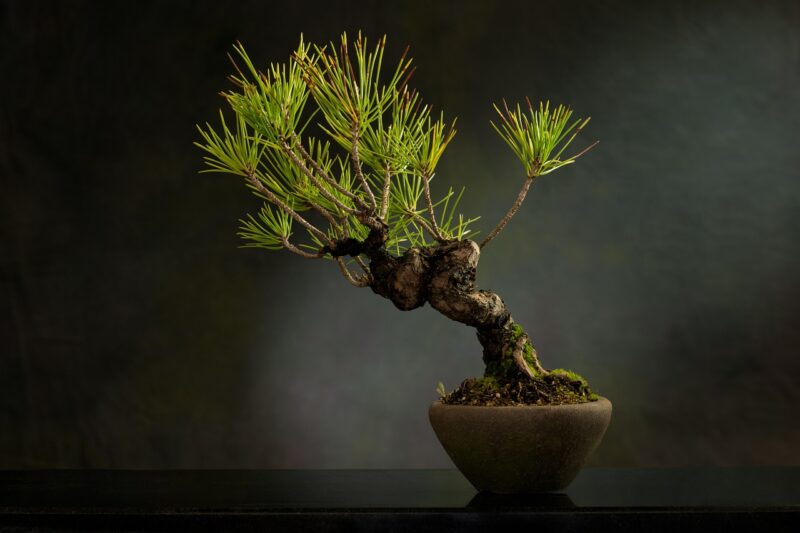How to Build a Bonsai Tree: A Hobby That Brings Peace and Nature Indoors
November 14, 2024

Bonsai trees are not merely plants; they represent a timeless art form that embodies nature, patience, and tranquility. Cultivating these miniature trees offers a unique way to bring a slice of the natural world indoors while fostering mindfulness and creativity. From their rich history in soil and seed to their nurturing, hands-on care, bonsai allows enthusiasts to engage with nature in a way that is both rewarding and peaceful.
1. Understanding the Essence of Bonsai
Bonsai, which translates to “planted in a container,” originated in China and was refined in Japan. The art of bonsai reflects the beauty of nature, with the goal of creating a miniature representation of a tree that you might find in a forest or garden. Each bonsai is a unique piece of art that evolves with the seasons, embodying the life cycle of nature.
Some key concepts to grasp when starting your bonsai journey include:
- Patience: Bonsai requires time and will display slow growth, making it a perfect hobby for those looking for a meditative experience.
- Technique: Creating a bonsai isn’t just about growing a tree; it involves various techniques in pruning, wiring, and watering to shape the plant’s growth effectively.
- Connection with Nature: Working with a bonsai encourages you to observe changes in the plant and experience a direct connection to the natural world, even indoors.
By understanding these essential aspects, you’re well on your way to becoming a bonsai enthusiast.
2. Choosing the Right Tree for Your Bonsai
When it comes to making a bonsai, selecting the right tree is one of the most crucial steps. Not all trees make suitable bonsai, so consider the following popular species:
- Ficus (Fig Tree): An excellent choice for beginners due to its hardiness and adaptability to indoor conditions. Ficus trees can grow well indoors and thrive with minimal maintenance.
- Juniper: With its stunning greenery and structure, the juniper variety is popular for outdoor bonsais. It requires more experience but rewards growers with beautiful foliage and shape.
- Chinese Elm: Known for its resilience and versatility, the Chinese elm can adapt to both indoor and outdoor settings, making it ideal for various bonsai styles.
- Pine: This traditional bonsai tree symbolizes longevity and resilience. Pines require more specific care, making them better suited for more experienced growers.
Consider environmental factors such as light, humidity, and temperature while selecting your tree to give it the best chance to thrive in your care.
3. Essential Tools for Bonsai Cultivation
Successful bonsai growing involves specific tools to help shape and maintain your tree. Here are some essential tools to invest in:
- Pruning Shears: Essential for trimming branches and maintaining the shape of your bonsai. Sharp, clean cuts help the tree heal better.
- Wiring Tools: Used for training and styling the tree. Bonsai wire comes in various gauges and can effectively shape the branches without damaging them.
- Soil Mix: The right soil composition is vital for drainage and root health. A bonsai soil mix typically includes a combination of organic and inorganic materials.
- Watering Can: Smaller than standard watering cans, which allows for precision while ensuring that you can control the amount of water you apply to your bonsai.
- Potting Mat: A mat can help protect surfaces while you work on potting and repotting your bonsai tree. It makes cleanup easier too.
By investing in these tools, you’ll be well-equipped to nurture your bonsai tree effectively.
4. The Art of Pruning and Training Your Bonsai
Pruning and training are central to the bonsai craft. These practices help to shape the tree’s appearance and promote healthy growth. Here’s how:
– Pruning: Regularly prune your bonsai to maintain its shape and control its size. Focus on removing dead leaves, branches growing inwards, and any excessively long growth. Pruning after your tree’s growing season will provide better results.
– Wiring: Use bonsai wire to gently guide branches into their desired position. Wrap the wire around carefully, ensuring it does not damage the bark. Remove the wire after a few months to avoid bark injury.
– Pinching: This technique encourages bushier growth and is done by removing new shoots as they sprout. This helps create a fuller appearance which is aesthetically pleasing.
By mastering these techniques over time, you’ll contribute to the unique character of each bonsai tree.
5. Watering and Fertilizing Your Bonsai
To ensure the health of your bonsai, proper watering and fertilizing practices are essential:
- Watering: Check the soil moisture regularly. Water your bonsai thoroughly, allowing excess water to drain out of the pot. Stressing a bonsai with too little or too much water can hinder its growth. Keep the soil moist but not soggy.
- Fertilizing: Use a balanced fertilizer during the growing season (spring and summer) to supply essential nutrients. Apply fertilizer every few weeks for optimal growth. In autumn and winter, reduce or stop fertilizing as the tree enters dormancy.
By adhering to these watering and fertilizing guidelines, you can promote healthy growth and vibrant foliage in your bonsai tree.
6. Common Mistakes to Avoid
As a beginner bonsai enthusiast, it’s crucial to be mindful of common pitfalls to ensure your tree thrives:
- Overwatering: This is perhaps the most common mistake. Ensure your pot has drainage holes and let the soil dry slightly between waterings to avoid root rot.
- Lack of Light: Bonsai trees need sufficient light to grow. Depending on the species, place your tree in bright, indirect light for optimal development.
- Neglecting Seasonal Changes: Watch for seasonal changes and adapt care strategies accordingly. Different species may require different care during dormancy in winter, so do your research to prepare the bonsai accordingly.
- Ignoring Pest Damage: Frequently inspect your bonsai for pests. Catching infestations early will prevent stress on the tree and make for easier treatment.
By avoiding these mistakes, you will ensure a more fruitful and gratifying bonsai journey.
Conclusion
Cultivating a bonsai tree is more than just a hobby; it is an opportunity to connect with nature and cultivate mindfulness in a fast-paced world. Each tree holds a story, reflecting your dedication, creativity, and growth. Whether you choose a hardy Ficus or a traditional Pine, the rewards of nurturing a bonsai include not only a beautiful piece of living art but also moments of peace and introspection as you become part of the ancient tradition of bonsai cultivation.
Dive into this rewarding art form and start your journey toward growing your very own bonsai tree today. With patience, practice, and the right techniques, you’ll find yourself immersed in a satisfying and calming hobby that brings nature into your home and helps to center your mind.






